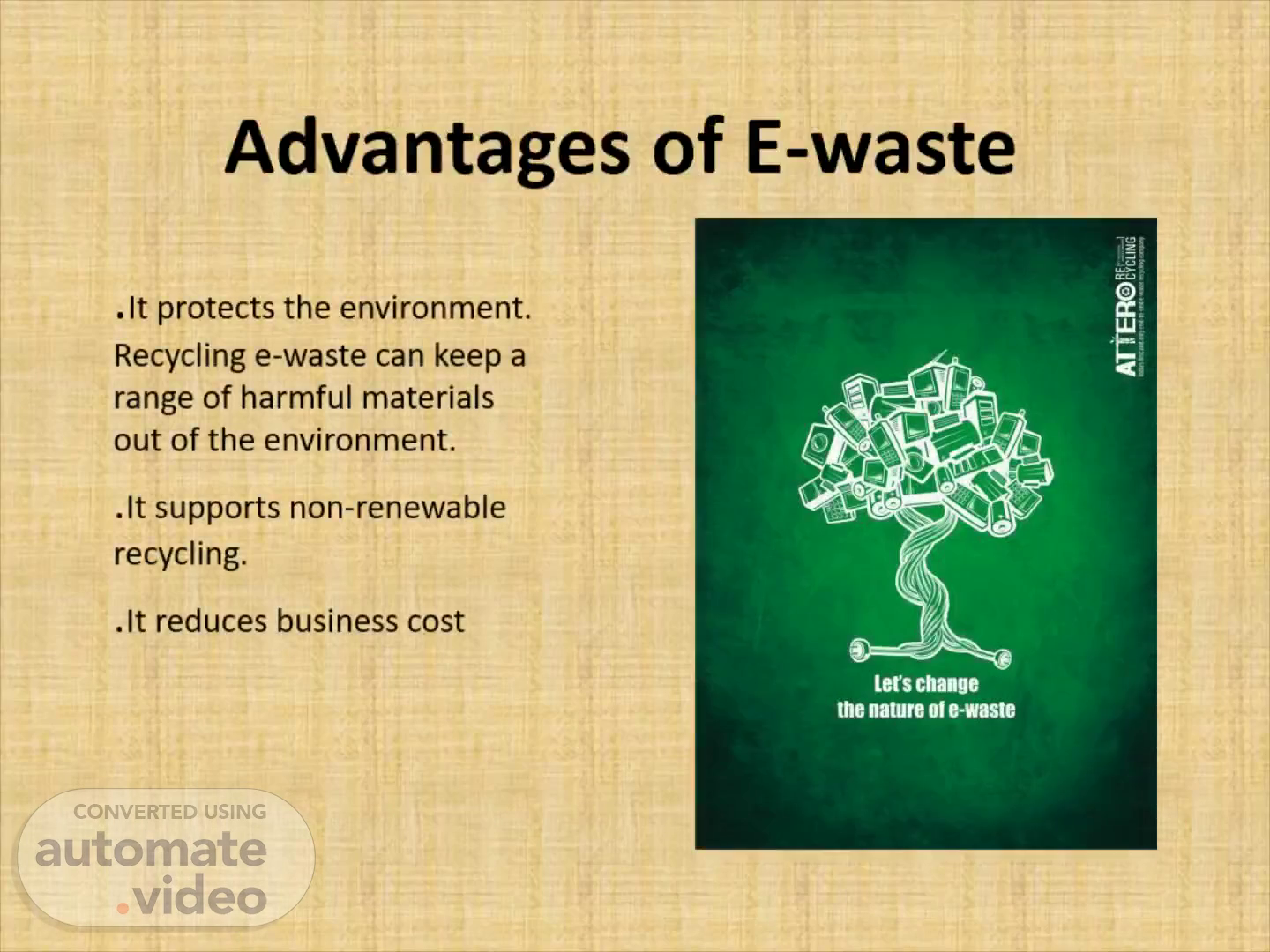Scene 1 (0s)
E-waste. 31SVM-3. What is E-waste? E-waste is electronic waste that describes discarded electrical or electronic devices. Used electronics which are destined for reuse, resale, salvage recycling through material recovery or disposal is called E-waste..
Scene 2 (0s)
Advantages of E-waste. . It protects the environment. Recycling e-waste can keep a range of harmful materials out of the environment. . It supports non-renewable recycling. . It reduces business cost.
Scene 3 (1m 15s)
Disadvantages of E-waste. . Computers and most electronics contain toxic materials such as lead, zinc, nickel and barium. . When E-waste is thrown away in landfills their toxic materials seep into groundwater, affecting both land and sea animals..
Scene 4 (1m 31s)
What causes E-waste?. What causes E-waste? P 22K.
Scene 5 (1m 46s)
Types of E-waste. abstract. Refrigerators and cooling equipments. .Laptops and mobile phones. .Television.
Scene 6 (1m 58s)
Reduce, Reuse and Recycle of E-waste. Reduce - Minimizing E-waste is one of the best ways to keep our environment safe. Reuse- E-waste contains precious metals such as gold and copper. These precious metals could be reused. Recycle-E-waste can be recycled by dust extraction, magnetic separation and water separation..
Scene 7 (2m 17s)
How to stop E-waste. S'. agouog. . Consider limiting the number of electronics you own. . Reuse as often as possible. . Recycle, recycle, recycle..
